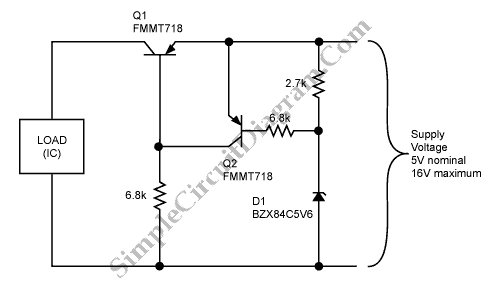Discrete Overvoltage Protector for Automotive Application
This is a circuit of discrete overvoltage protector for automotive application. There are two basic thing that must be done by protection circuit. They are prevent voltages greater than the maximum allowable from being applied to the IC pins and the protection circuit not to intrude on the normal function of the circuit. Beside that, it must be fast enough to act on any transient events. Here is the schematic diagram of discrete overvoltage protector circuit :

The PNP transistor Q1 is the main pass element of this circuit. The characteristics of this transistor will determine any power-supply voltage drops. A Zetex FMMT718 is used to minimizes the voltage drop induced by the presence of the protection circuit. As the control element for Q1, this circuit use transistor Q2, when the voltage at the power-supply input is equal to the sum of the zener voltage Q2 will turn on and turning off Q1. A typical trip voltage that is produce byD1 and Q2 is 5.85V. To keep Q1 turned on under normal circumstances, the 6.8k resistor connected to the base of Q1 by producing the current.
During overvoltage conditions, the load is disconnected by this circuit. When the overvoltage conditions is detected, the Q1 will turn off and remove power from the load, it will turn on when the conditons back to normal. The response speed of this circuit is one of the attractions of this circuit because it does not use feedback, so there are no slew-rate limitations to overcome or high-order damping effects. There are no special requirements of Q2 and almost any PNP device could be replaced but Q2 should have the same type as Q1. [Source: maxim-ic.com]